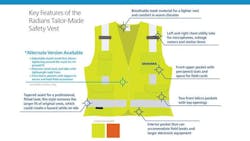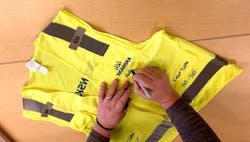Skanska designs personal protective equipment tailor-made for the female workforce
By David Malone, Associate Editor
The number of women in the construction industry is growing. According to the Institute for Women’s Policy Research, between 2017 and 2018 alone the number of women working in construction trades increased by 17.6%. The percentage of women classified as construction managers has also risen, from 5.9% in 2003 to 7.7% in 2018. As a whole, the percentage of women in the construction industry sits at 9.9%.
As the industry evolves and the number of women within it grows, it has become obvious that the personal protective equipment (PPE) these professionals use on a daily basis has not kept pace. PPE—meaning safety vests, gloves, and goggles—are oftentimes too large for many female professionals. PPE that doesn’t fit properly is not only failing to provide the level of safety intended, it could be actively creating dangerous situations.
See Also: REEF Technology wants to turn parking facilities into urban mobility hubs
That’s why construction giant Skanska USA decided to create a full line of PPE tailored to women, available to both Skanska employees and the construction industry at large, beginning with customized safety vests. Skanska and Colony Hardware, its PPE vendor in New York, created sample vests that they then sent to women from the company’s New York, Seattle, and Boston offices for feedback.
Their input was then implemented to create two tailor-made vest options: one with a tapered waist that removes the larger fit of original vests, and one that forgoes the tapered waist in favor of an adjustable elastic band around the waist. Both options are made from a breathable mesh material that makes the vest lighter and more comfortable in warm climates.
Other features of both vests include:
• left and right chest utility tabs for microphones and voltage meters
• a front upper pocket with pen/pencil slots and space for field cards
• two front velcro pockets with top openings
• an interior pocket that can accommodate field books and larger electronic equipment.
The elastic vest is only available in lime, while the tapered vest is available in lime and orange.
The vests debuted in May, during National Construction Safety Week. While they are a good start, Skanska is looking at the vests as just that, a start. The company also created two types of female-specific gloves—one for touchscreens and one for general use—and has more PPE designed for women planned for the future.
For more, see Skanska’s launch announcement about the PPE program here.


